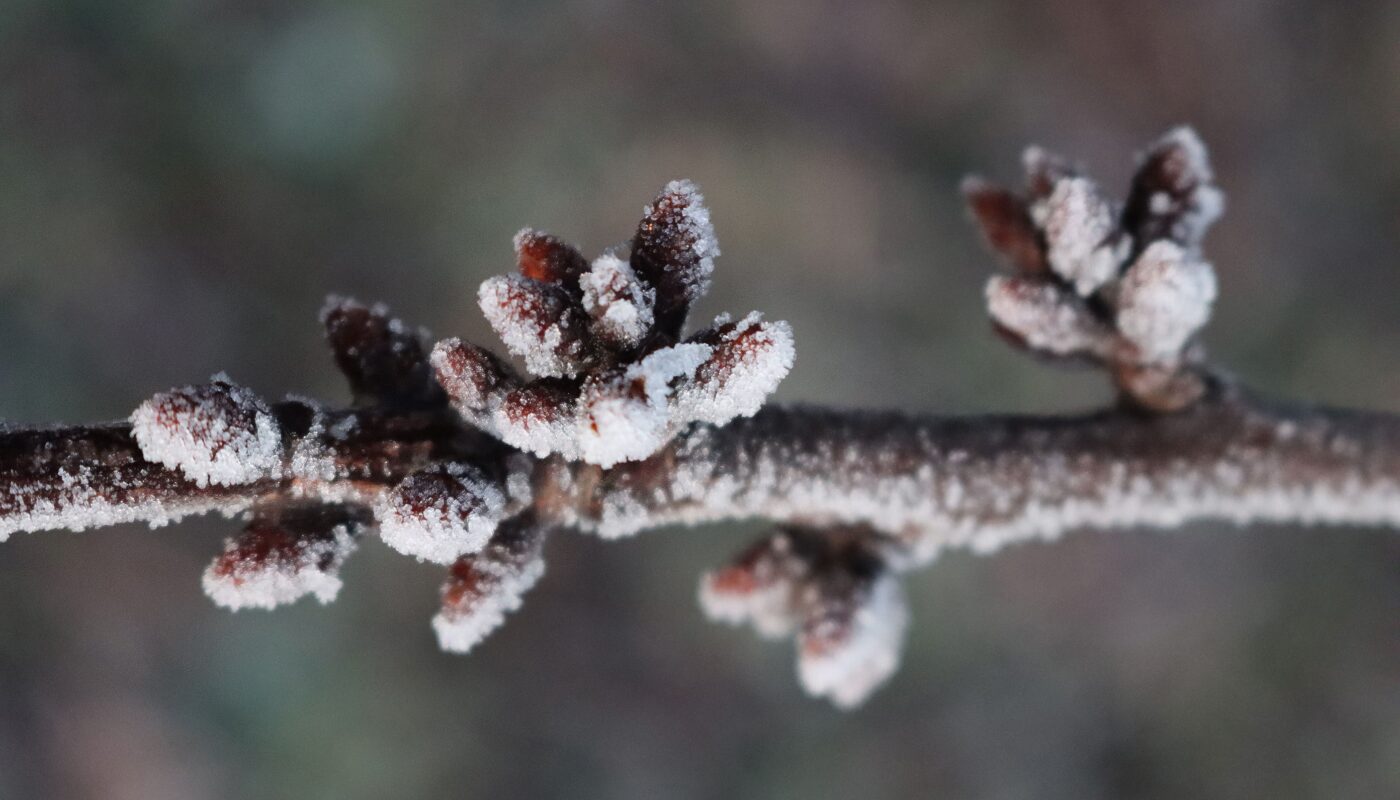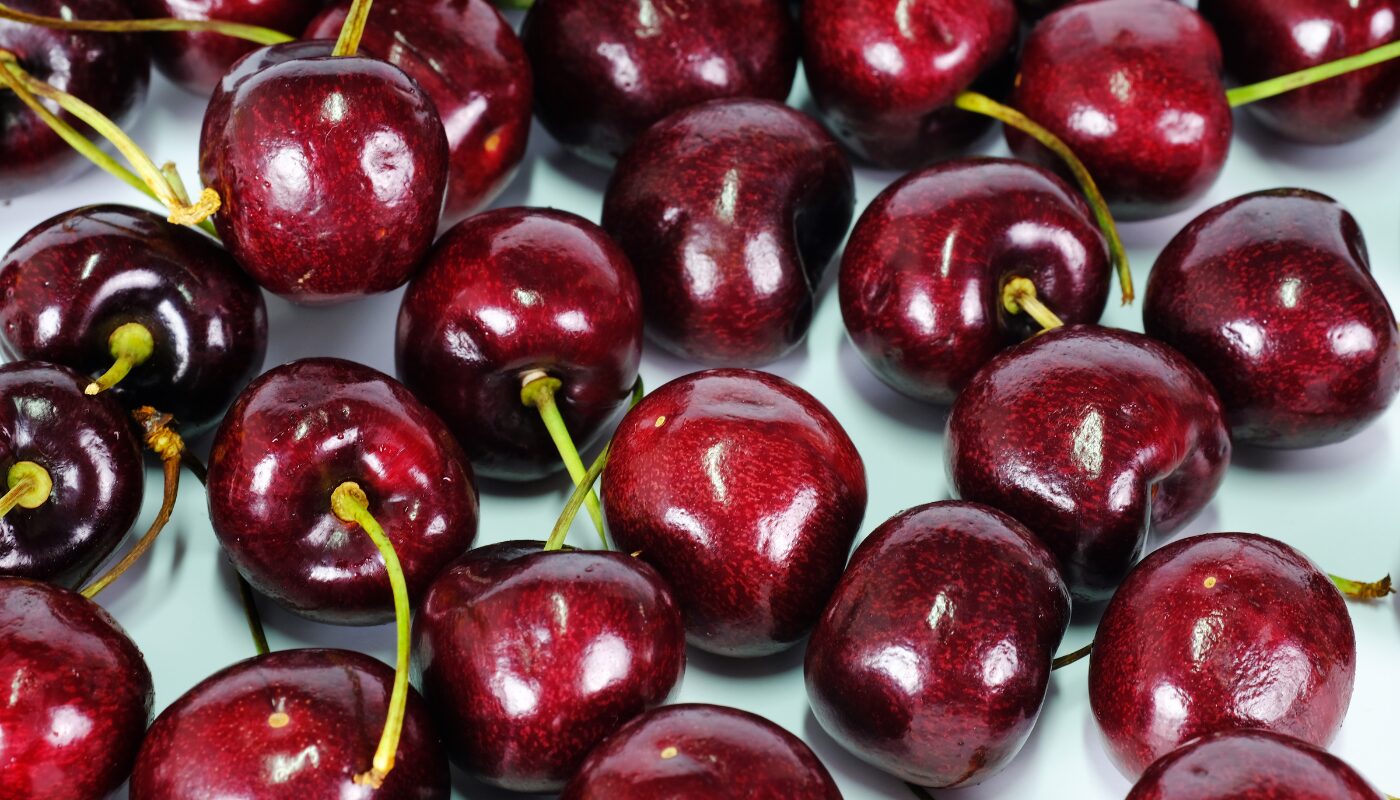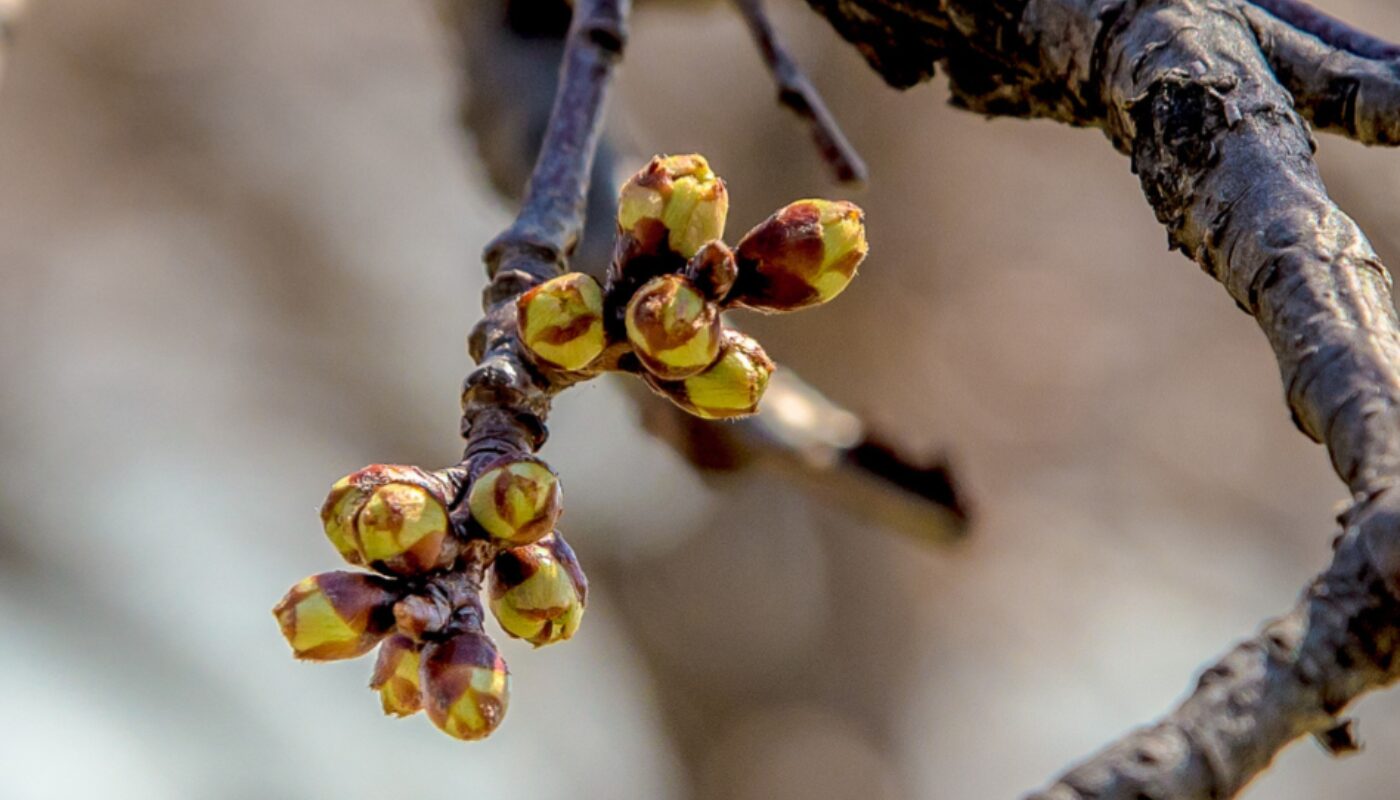A few days ago, we shared about the importance of paying attention to frost control when the swollen bud process begins in cherry trees. Due to its phenological state, this period is when the crop’s sensitivity increases, and frost damage can be decisive and devastating for seasonal production.
It is essential at this time of year to consider the occurrence of frost episodes and their proper control. Although there are various definitions regarding this climatic phenomenon, some specialists consider it a meteorological frost when the air temperature at 1.50 m above the ground drops to a value equal to or below the freezing point of water, that is, 0°C, regardless of its duration or intensity. “From an agrometeorological point of view, frost could be defined as the temperature at which plant tissues begin to suffer damage.”
The lower the temperatures and the longer the episode lasts, the greater the damage to the plants can be. Although frosts usually occur during the early morning or at dawn (sunrise), during the winter season, these episodes can last for several hours.
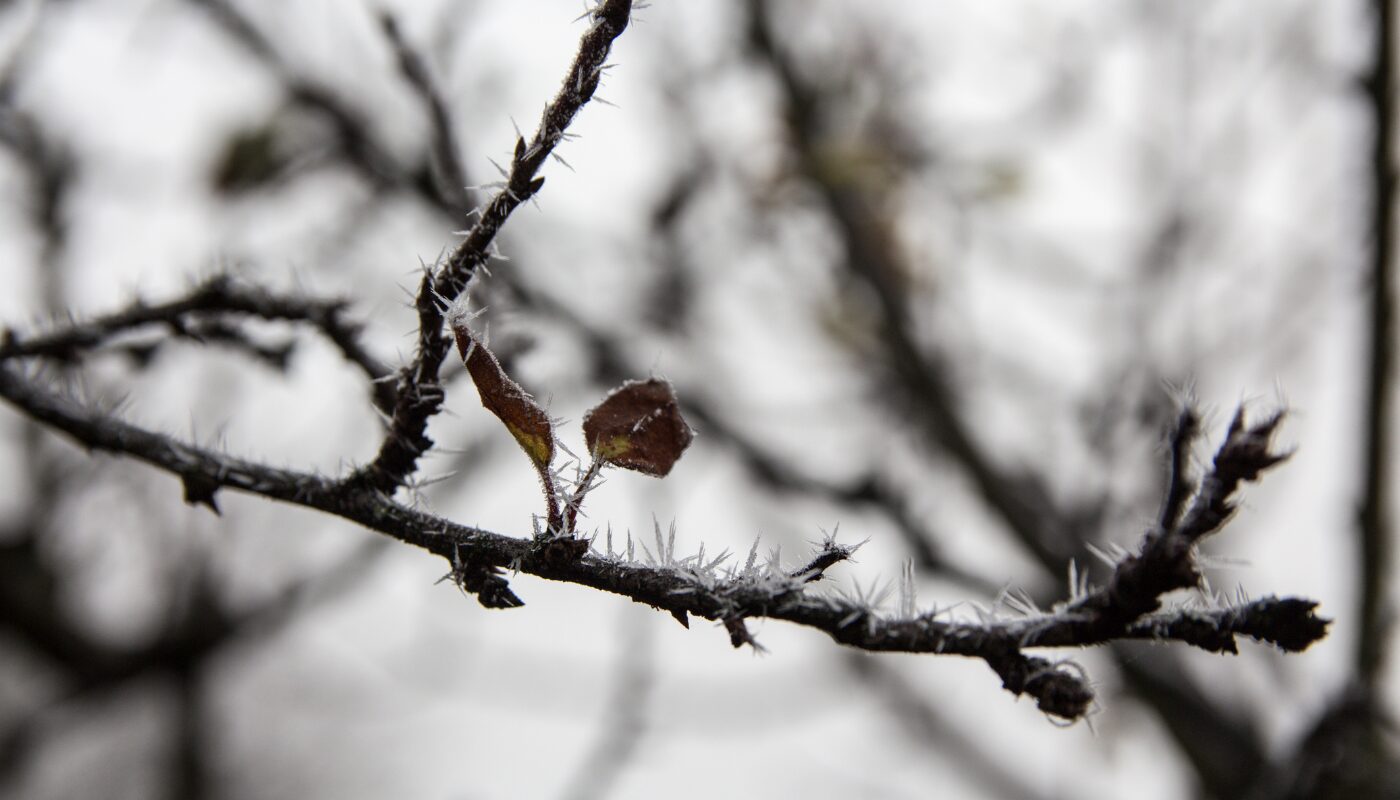
Types of frost
Frosts can be classified according to synoptic origin, time of occurrence, and visual appearance. The first classification, corresponding to synoptic origin, considers:
Advection Frost: Normally occurs after the passage of a frontal system, when a mass of cold air with high pressure from polar zones enters; that is, they occur due to the movement of a mass of cold air over a specific region. Among its main characteristics are: clear skies, variable wind, frosts in extensive areas, and persistence for days.
Radiative Frost: Occurs during clear nights and is produced due to radiation loss from the surface during a clear night and dry atmosphere. Among its characteristics are: heat loss, nighttime cooling, clear skies, weak winds, local frosts.
Mixed Frost: These are a combination of advection and radiative frosts; rather than being a type of frost, it is a transition between the cold air mass and the loss of heat from the ground due to radiation.
Evaporation Frost: Occurs due to the evaporation of water from the surface of plants. It usually occurs when atmospheric relative humidity decreases, and the dew formed on the plants evaporates, a process that requires heat; this heat is provided by the plant, causing a subsequent cooling of it.
Frosts can also be classified according to the time of occurrence:
Spring or Late Frosts: Occur once winter is over and mainly affect annual cycle crops and fruit trees in their reproductive process.
Autumn or Early Frosts: Episodes prior to the arrival of winter and can be harmful to crops that are in the harvesting period.
Winter Frosts: Occur when there is a significant decrease in temperatures. They can affect all types of crops; however, they are not harmful to deciduous fruit trees because they are in a dormant period.
According to their visual appearance, this type of climatic phenomena is classified as:
Black Frost: It does not present frost, and the affected plants turn black the day after the phenomenon; the damaged parts of it die. They occur with low water vapor concentration in the atmosphere, which in turn causes lethal temperatures for crops. It is the one that can cause the most damage to agriculture.
White Frost or Hoarfrost: A less severe climatic phenomenon than black frost. Simply put, it is the freezing of dew, which occurs when the surface of bodies reaches a temperature equal to or lower than 0°C.
Damage from Frost
Plants are susceptible to damage from low temperatures and/or freezing; however, the severity of these depends on the type of crop and varieties, even when subjected to the same temperature and phenological state.
In cherry trees, for example, there are phenological states more vulnerable to frost damage. According to what the Avium team has been able to ascertain in its 13 years of experience in cherry production consulting, there are significant records of damage between the swollen bud and exposed cluster states, compared to more advanced states, such as white button or full bloom.
Between these states (swollen bud-exposed cluster), cherry tree plants are more vulnerable to cold damage; therefore, it is necessary that, in episodes of low temperatures, below 0.5°C for more than an hour, to control this type of phenomenon through the different methods that exist and that will be analyzed later.
Frost damage occurs when ice forms inside the plant tissue, causing damage to the cells: “The formation of ice crystals within the protoplasm of plant cells is direct frost damage (intracellular frost), while indirect damage is the formation of ice inside the plant, but outside the cells (extracellular frost), it is the formation of ice that really damages the plants and not the cold temperatures,” states the article “Theoretical and Practical Basis of Frost Effects on Cherry Production” prepared by Avium.
Photo 1. Visual appearance of floral primordia in cherry buds, before (A) and after (B) from exposure to a frost event. (Source: Valenzuela et al. 2020).
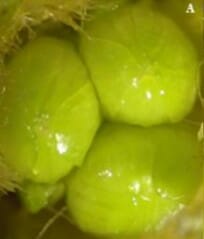

The degree of frost damage is related to the freezing and thawing process of water. If the cooling is rapid, its effect is irreversible and the damage severe, as the ice forms quickly in the spaces between cells (meat) and inside the cells, and they are unable to adapt.
Subsequently, the cell membrane and the constituents of the protoplasm decompose, causing cell death and darkening of these. In another case, if the cooling is slow, the cells can adapt to the changes; moreover, once the extracellular water freezes, there is an outflow of intracellular water, which compensates for the osmotic deficit. In this case, tissues can survive and recover; however, cells can die due to both denaturation processes and mechanical effects.
The adaptation of plants to cold temperatures in the face of frost is called “hardening,” and, as the Avium team explains, “this process is probably related to a higher degree of solute content in plant tissue or with a decrease in the concentration of active bacteria in the nucleation of ice in cold periods, or, in fact, it may be a combination of both components. The accumulation of sugars or sugar alcohols would decrease the freezing temperature of tissues and increase supercooling in many deciduous or evergreen trees in the face of low air temperatures.”
During cherry post-harvest, while preventing abiotic stress caused by high temperatures through different strategies, indirectly contributes to improving the “tolerance” of reproductive structures, technically known as “hardening” at low temperatures, due to the better conformation of buds in the cultivar.
Frost Control Systems
As years go by, technology has provided the cherry industry with new frost control methods. Below is a brief summary of the most commonly used, covering both simple and sophisticated tools. It should be noted that there are passive and active methods for frost control, the former being a strategy related to adapting plantations to the climate, choosing the best varieties, suitable plantation locations, and orchard management.
This time, we will delve into active means of frost control, whose objective is to create a microclimate around the plant and prevent damage from cold.
Sprinklers: It consists of a high-spraying system that allows large amounts of water to cover the plant; as the water cools, it releases heat into the environment, allowing the plants to maintain a temperature of 0°C and not reach the freezing point that causes damage. It is one of the most used methods, besides being quite economical compared to other strategies.
Flooding: It is based on the same principle as sprinkler control, however, it can only be done in certain orchards; it consists of flooding the land, thus preventing it from cooling, but it is only applicable in crops tolerant to root asphyxia.
Combustion: Hot air, due to its chemical composition, tends to always be located in upper layers compared to cold air; thus, by generating combustion with fuel-using torch burners, a barrier is created that prevents the mixing of air at different temperatures. Special care must be taken with direct heat to the plants, considering this important aspect when locating heaters in the orchard.
Fire and Smoke: Although it is still a method used, research has determined that its effect is practically nil: “Bonfires produce whirlwinds in an influence radius not exceeding 20 meters and the area heated by radiation is not important in a cultivated area. The use of bonfires has a limited effect on frost control. On the other hand, smoke from burning tires, wood, or weeds is not effective in frost control,” as stated in the article “Frost Control in Agriculture – Part I,” by INIA Tierra adentro.
Fans: They are the most modern and effective alternative for frost control; their blades mix the warmer air found at a height of between 10 and 20 meters above the orchard surface with the cold air on the ground. This allows the air temperature in contact with the crop to rise one or two degrees and avoid frost damage.
Helicopters: They generate the same effect as fans, removing layers of warmer air to lower sectors; however, the scarcity of helicopters and the high costs of use make it a rarely used method, except in highly profitable crops.
Covers: They are versatile and increasingly offer more technology, allowing orchards to be covered with structures that protect crops from inclement weather, such as rain, hail, or frost, while also providing optimal ventilation indoors. However, they may need to be complemented with another type of frost control for episodes of greater intensity.
More Agronomic Management content here
Originally published in Spanish on Smartcherry.cl


